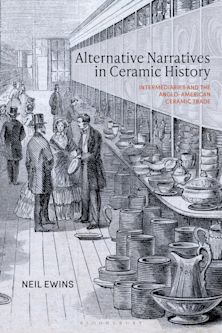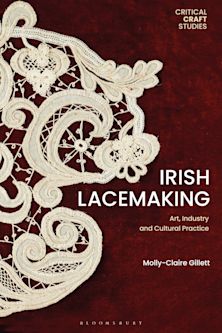- Home
- ACADEMIC
- Design
- History and Theory of Craft
- China's Porcelain Capital
China's Porcelain Capital
The Rise, Fall and Reinvention of Ceramics in Jingdezhen
China's Porcelain Capital
The Rise, Fall and Reinvention of Ceramics in Jingdezhen
This product is usually dispatched within 10-14 days
- Delivery and returns info
-
Free UK delivery on orders £30 or over
You must sign in to add this item to your wishlist. Please sign in or create an account
Description
Maris Boyd Gillette's groundbreaking study tells the story of Jingdezhen, China's porcelain capital, from its origins in 1004 in Song dynasty China to the present day.
Gillette explores how Jingdezhen has been affected by state involvement in porcelain production, particularly during the long 20th century. She considers how the Chinese government has consumed, invested in, taxed and managed the local ceramics industry, and the effects of this state intervention on ceramists' lives, their local environment and the nature of the goods they produce. Gillette traces how Jingdezhen experienced the transition from imperial rule to state ownership under communism, the changing fortunes of the ceramics industry in the early 21st century, the decay and decline that accompanied privatisation, and a revival brought about by an entrepreneurial culture focusing on the manufacture of highly-prized 'art porcelain'.
Table of Contents
2. Creating a porcelain capital, prehistory to 1785
3. Decline and disarray, 1786 - 1948
4. Production and politics, 1949 - 1972
5. Dual track porcelain, 1973 - 1993
6. Porcelain capital no more, 1994 - 2010
7. From porcelain capital to heritage site
Glossary
Bibliography
Index
Product details

| Published | 25 Jan 2018 |
|---|---|
| Format | Paperback |
| Edition | 1st |
| Extent | 200 |
| ISBN | 9781350044821 |
| Imprint | Bloomsbury Academic |
| Dimensions | 234 x 156 mm |
| Publisher | Bloomsbury Publishing |
About the contributors
Reviews
-
[China's Porcelain Capital] is filled with intriguing facts. Those with an interest in porcelain and anyone thinking about working in China, or having artwork made in China, should consider reading this book.
Crafts Magazine
-
This book is the compelling story of China's 'porcelain capital', as the city is known ... Getting to know the ceramists who work there, Gillette ensures that this tome makes an arresting read.
Ceramic Review
-
Maris Boyd Gillette takes us on a journey of more than a thousand years of history from the Song Dynasty until the present day ... This book is without doubt a great way to learn about the history and the present moment of this city.
Infocerámica (Bloomsbury translation)
-
Whilst researching the book the author has spent months living in the area and studying the past and present production processes ... This is an absolutely readable book with an excellent glossary of technical terms, an extensive biography and a good index.
Keramiske noter (Bloomsbury translation)
-
Historians like to boast of getting their hands dirty in the archives. In this fascinating book, Maris Gillette got her feet muddy to tell the 1000-year story of how the Chinese state, global markets and the potters of Jingdezhen have interacted to produce the most extraordinary porcelains in the world.
Dr Steven Conn, W E Smith Professor of History at Miami University, USA
-
Positioning ethnographic writing at the center of art historical and anthropological perspectives, Gillette makes an enormous contribution to our understanding of cultural production in China. This astute and intimate portrait uses first-rate scholarship and a unique apprenticeship in the community to reveal the complexities of contemporary ceramic production in Jingdezhen.
Dr Morgan Perkins, Associate Professor of Anthropology and Art at the State University of New York, USA

ONLINE RESOURCES
Bloomsbury Collections
This book is available on Bloomsbury Collections where your library has access.































